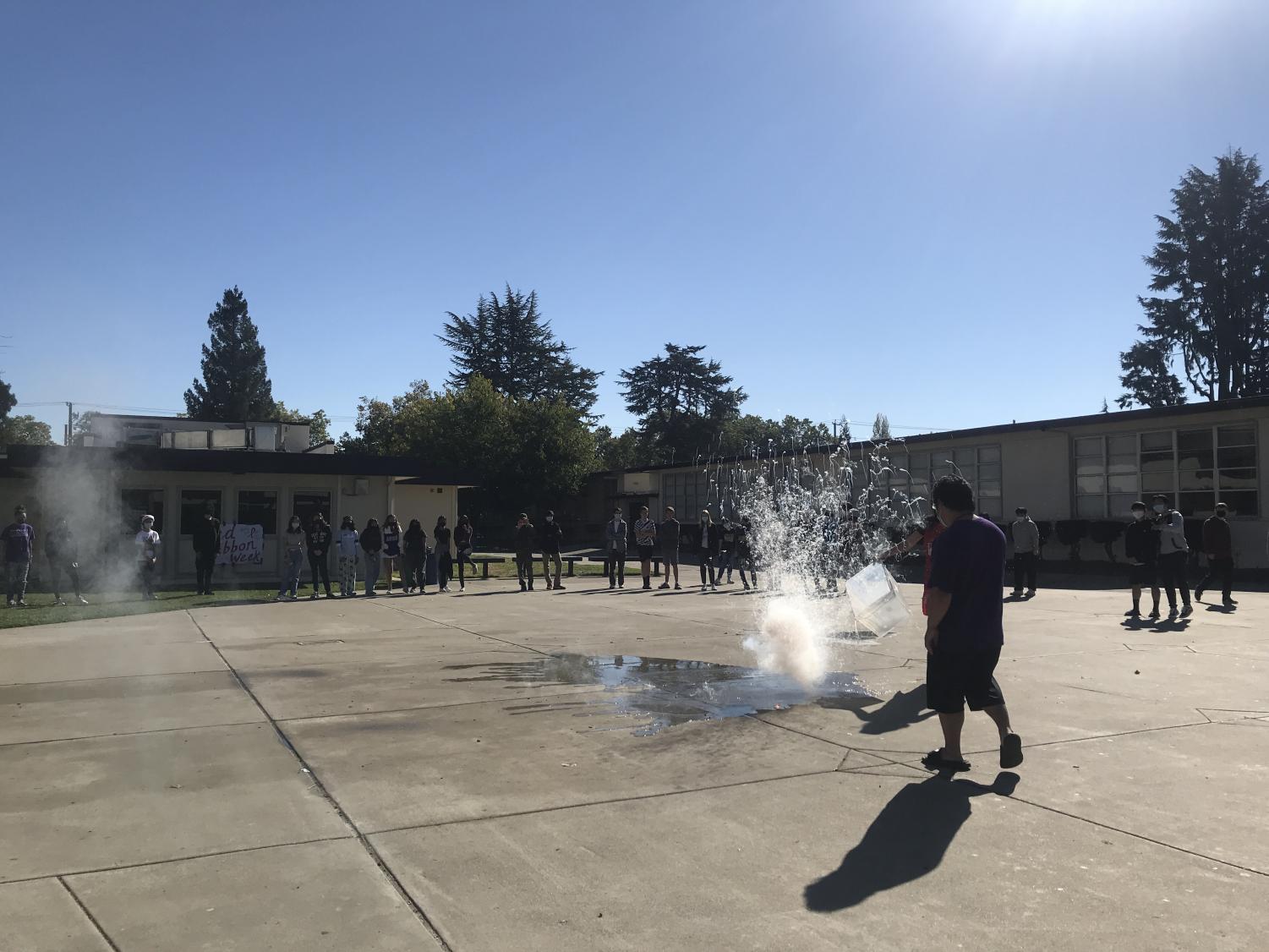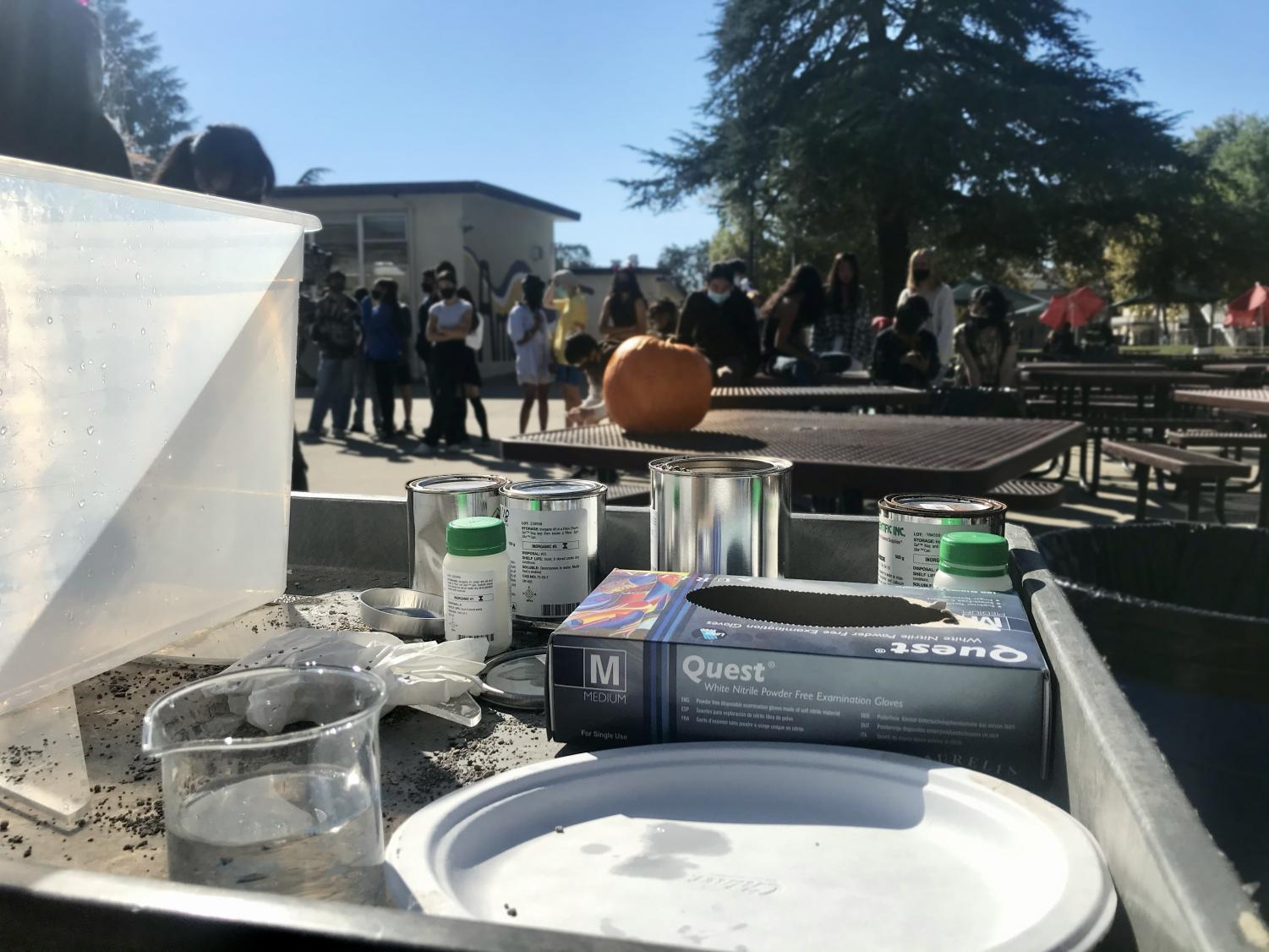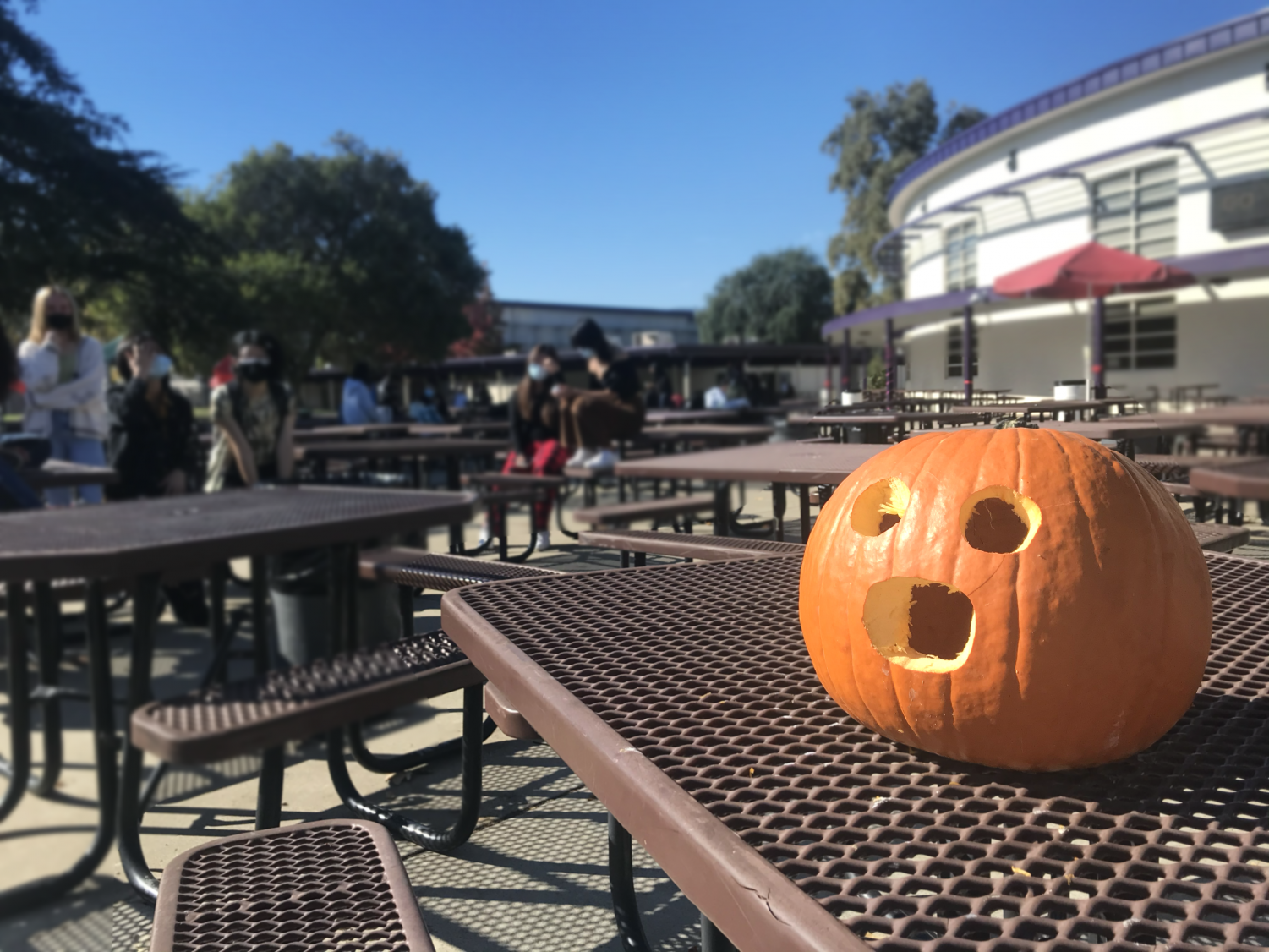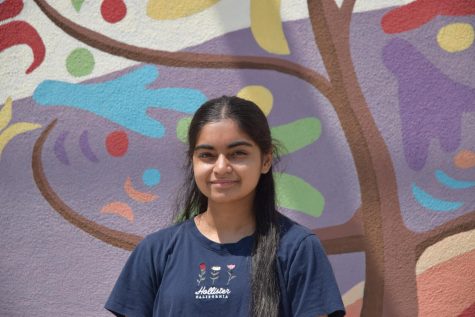The exploding pumpkin lab
November 4, 2021
Last Friday, Amador chemistry teachers conducted two explosive demonstrations in front of the library.
The first demo involved exploding parts of a pumpkin, and the second demo centered around sodium and its reactivity with water.
“[To blow up the pumpkin,] we’ll have a chemical reaction that’s occurring, producing a gas that will combust. When that gas lights, then the pumpkin can explode. Our second demonstration is looking at sodium. Elemental sodium highly reacts with water, so we’re going to take a chunk of it and toss it in a tub of water, and it’ll be like a little fireworks display,” said AV chemistry teacher, Brandy Barnett.
During the pumpkin demo in particular, many students were surprised to find that the pumpkin itself did not explode. Instead, teachers carved a face into the pumpkin and used a chemical reaction to pop the face out.
“I thought the pumpkin ‘explosion’ was a bit of a misleading name, but it was still fun to watch something that related to what we were coving in class,” said Alyssa Kim (‘24).
The exploding pumpkin demo began last year, right before students went on distance learning. The sodium-water demo, on the other hand, has been a recurring lesson in chemistry classes for the past 5-6 years.
“We’re always looking for interesting demonstrations that we can share with the students, so anything that gets the chemistry teachers excited usually gets the students excited too… [Of course] we’re always watching our safety, and these are two reactions that can be dangerous— that’s why we’re doing it outside in front of the library this year so we have lots of space and so we’re at a nice, safe distance” said Barnett.
The demos were primarily conducted to excite students, but they were also very relevant to what chemistry classes were covering in their curriculum.
“[Sodium is] a property that reacts with water—we just finished off the periodic table talking about the different trends and reactivity, and we’re talking about bonds right now and the energy associated with those bonds. We’re doing reactions next, which is what the pumpkin demonstration is [for]—we’re looking at the two different reactions that are occurring which release this energy,” said Barnett.
Likewise, many students who observed the demonstrations found that they were informative, yet entertaining ways to learn.
“I thought the exploding pumpkin lab was an interesting way for the chemistry teachers to connect how sodium is a very reactive metal with Halloween festivities. Watching the sodium react with water in the tub was really cool, and it was fun to see the pumpkin’s face pop out,” said Kimberly Khow (‘24).








